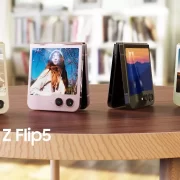Custom heat transfers have become a popular choice for apparel decoration, offering a versatile and cost-effective solution for businesses and individuals alike. Understanding the intricacies of custom heat transfers is crucial for maximizing their effectiveness and achieving high-quality results.
Understanding Custom Heat Transfers
What are custom heat transfers?
Custom heat transfers are designs or graphics that are printed onto transfer paper using specialized ink or vinyl. These transfers are then applied to various surfaces, primarily fabrics, using heat and pressure, resulting in the transfer of the design onto the desired substrate.
How do custom heat transfers work?
Custom heat transfers utilize a simple yet effective mechanism. When heat and pressure are applied to the transfer paper, the ink or vinyl undergoes a phase change, turning into a gas and bonding with the surface of the fabric. This creates a permanent and durable bond, ensuring that the design remains intact even after multiple washes.
Types of Custom Heat Transfers
Custom heat transfers come in various forms, each offering unique benefits and applications:
- Plastisol Transfers: These transfers use PVC-based ink that is printed onto transfer paper and then transferred onto the fabric using heat. Plastisol transfers are known for their vibrant colors and excellent opacity.
- Sublimation Transfers: Sublimation transfers involve printing the design onto transfer paper using special sublimation inks. When heat is applied, the ink sublimates, turning into a gas and bonding directly with the fabric fibers, resulting in vibrant and long-lasting prints.
- Vinyl Transfers: Vinyl transfers are made by cutting designs from colored vinyl sheets and then heat pressing them onto the fabric. Vinyl transfers are ideal for intricate designs and offer excellent durability.
Benefits of Using Custom Heat Transfers
Custom heat transfers offer several advantages over traditional printing methods:
- Cost-effectiveness: Custom heat transfers are often more cost-effective than other printing methods, especially for small to medium-sized orders.
- Versatility: Custom heat transfers can be applied to a wide range of fabrics and materials, making them suitable for various applications.
- Durability: High-quality custom heat transfers are known for their durability and resistance to fading, cracking, and peeling.
Applications of Custom Heat Transfers
Custom heat transfers find applications across various industries:
- Apparel industry: Custom heat transfers are widely used for decorating t-shirts, hoodies, and other garments, allowing for endless design possibilities.
- Promotional products: Businesses use custom heat transfers to create branded promotional items such as bags, hats, and accessories.
- Sports uniforms: Custom heat transfers are commonly used to personalize sports uniforms with team logos, player names, and numbers.
How to Choose the Right Custom Heat Transfer
When selecting custom heat transfers, consider the following factors:
- Fabric/Material: Choose transfers that are compatible with the fabric or material of the substrate.
- Design complexity: Different transfer methods are suitable for different design complexities, so choose accordingly.
- Quantity required: Some DTF transfer methods are more cost-effective for large quantities, while others are better suited for small runs.
Steps to Apply Custom Heat Transfers
To achieve optimal results when applying custom heat transfers, follow these steps:
- Preparing the surface: Ensure that the fabric or surface is clean, dry, and free of any wrinkles or imperfections.
- Applying the transfer: Place the transfer paper with the design facing down onto the fabric in the desired position.
- Heat press technique: Use a heat press machine to apply heat and pressure evenly across the transfer paper for the specified duration.
Tips for Maximizing the Effectiveness of Custom Heat Transfers
To ensure the best results and longevity of custom heat transfers, keep the following tips in mind:
- Proper temperature and pressure settings: Follow the manufacturer’s recommendations for temperature and pressure settings to prevent under or over-pressing.
- Quality of transfer material: Invest in high-quality transfer paper and inks to ensure vibrant colors and long-lasting prints.
- Storage and handling: Store transfers in a cool, dry place away from direct sunlight, and handle them carefully to avoid damage.
Common Mistakes to Avoid
Avoid these common pitfalls when working with custom heat transfers:
- Incorrect temperature settings: Using the wrong temperature can result in incomplete transfers or damage to the fabric.
- Inadequate surface preparation: Failing to properly prepare the fabric or surface can lead to poor adhesion and subpar results.
- Poor transfer alignment: Misalignment of the transfer can result in crooked or distorted designs.
Future Trends in Custom Heat Transfers
The custom heat transfer industry is constantly evolving, with advancements in technology and materials driving innovation. Some emerging trends include:
- Technological advancements: New printing techniques and equipment are improving the quality and efficiency of custom heat transfers.
- Sustainable options: Eco-friendly inks and materials are gaining popularity as businesses and consumers become more environmentally conscious.
Case Studies: Successful Implementation of Custom Heat Transfers
Several businesses have successfully leveraged custom heat transfers to achieve their branding and marketing goals. Case studies highlighting these success stories can provide valuable insights and inspiration for others.
Challenges and Solutions
While custom heat transfers offer numerous benefits, they also present challenges, such as:
- Adapting to different fabric types: Some fabrics require special considerations or pre-treatments to ensure optimal adhesion and durability.
- Meeting specific design requirements: Intricate designs or unique substrates may require custom solutions or adjustments to standard procedures.
Comparison with Other Printing Methods
Custom heat transfers offer distinct advantages over other printing methods, such as:
- Screen printing: Custom heat transfers are often more cost-effective for small runs and offer greater design flexibility.
- Direct-to-garment printing: While direct-to-garment printing is suitable for intricate designs, custom heat transfers are more versatile and can be applied to a wider range of fabrics.
A Closing Thought
Custom heat transfers offer a versatile, cost-effective, and durable solution for decorating apparel and promotional items. With various transfer methods available, businesses and individuals can choose the option that best suits their needs, whether it’s vibrant plastisol transfers, versatile sublimation transfers, or intricate vinyl transfers. By following proper application techniques and considering factors such as fabric type and design complexity, users can achieve high-quality results that withstand the test of time. As the industry continues to evolve with advancements in technology and materials, custom heat transfers remain a popular choice for branding, marketing, and personalization. Whether you’re a small business looking to create branded merchandise or an individual seeking to add a personal touch to your garments, custom heat transfers offer endless possibilities for creativity and customization.









Comments